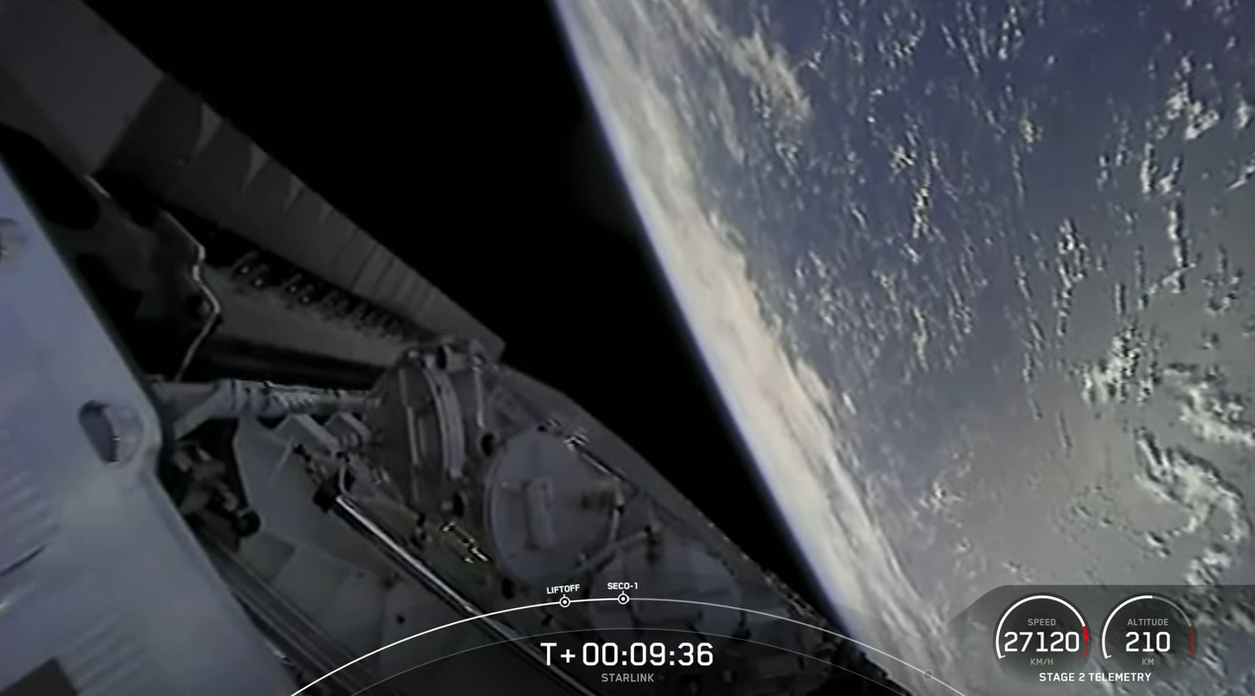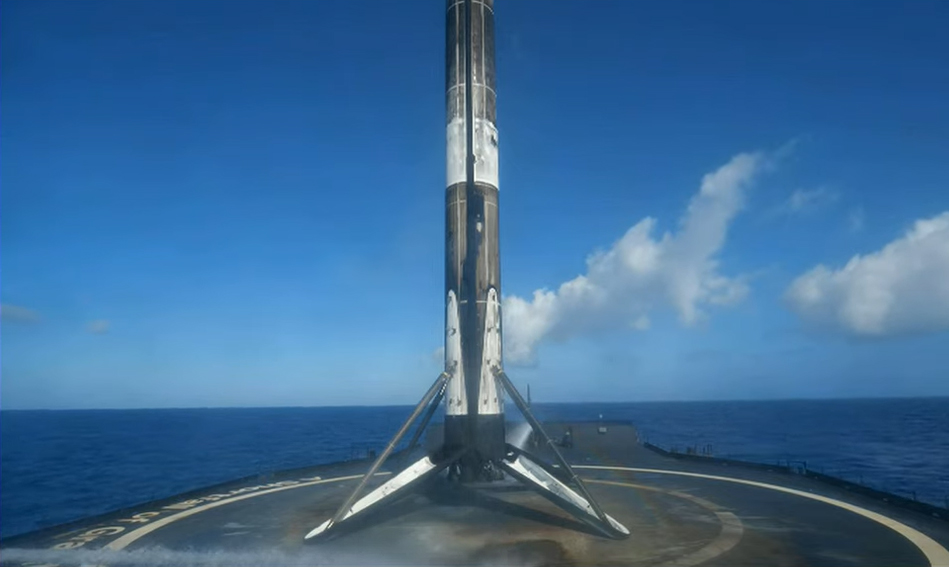SpaceX launches Starlink satellites on 'American broomstick' and lands rocket at sea
The used Falcon 9 lofted 48 Starlink satellites into orbit on its 4th trip to space.
SpaceX successfully launched a new batch of Starlink internet satellites on Wednesday (March 9), marking the company's 10th launch in as many weeks.
A two-stage Falcon 9 rocket launched 48 Starlink satellites into orbit from Cape Canaveral Space Force Station in Florida at 8:45 a.m. EST (1545 GMT). The rocket's first stage then returned to Earth for a smooth touchdown at sea on the SpaceX droneship A Shortfall of Gravitas.
"Time to let the American broomstick fly and hear the sounds of freedom," SpaceX's launch director said just before launch. The call was an apparent response to Russian space agency chief Dmitry Rogozin, who said "let them fly on something else, their broomsticks" last week after Russia halted sales of its rocket engines to U.S. launch providers amid economic sanctions following that country's invasion of Ukraine on Feb. 24.
Live updates: Russia's Ukraine invasion and space impacts
Related: SpaceX's Starlink megaconstellation launches in photos



SpaceX CEO Elon Musk has leaned into Rogozin's comments, calling the Falcon 9 — the workhorse vehicle of SpaceX's reusable fleet — a dependable "American broomstick" in a Twitter post last week. SpaceX has also provided Starlink terminals to Ukraine to help restore communications and internet service across the country and is focusing on cybersecurity to prevent jamming of those terminals.
"Another 48 Starlinks just reached orbit," Musk wrote on Twitter Wednesday after the successful launch.
Starlink is the giant constellation of broadband satellites that SpaceX is assembling in low Earth orbit. The company has already launched more than 2,000 Starlink craft since 2019, and many more will go up in the relatively near future.
Breaking space news, the latest updates on rocket launches, skywatching events and more!
🇺🇸🇺🇸 American Broomstick 🇺🇸🇺🇸 pic.twitter.com/r2hJvFQosSMarch 3, 2022

SpaceX has permission to launch 12,000 Starlink satellites and has applied for approval for up to 30,000 more. Wednesday's Starlink mission, called Starlink 4-10, marked the 41st flight for the megaconstellation.
Last month, SpaceX lost nearly an entire batch of Starlink satellites due to a solar storm that caused dozens of Starlinks to fall from space and burn up in Earth's atmosphere days after launch. SpaceX has since increased its initial deployment altitude to avoid similar incidents from recurring.
Wednesday's launch marked the fourth flight and landing for its particular Falcon 9 first stage, SpaceX has said. The booster also launched the Arabsat-6A mission in April 2019, the Space Test Program-2 (STP-2) flight for the U.S. military in June 2019 and the Italian Earth-observation satellite COSMO-SkyMed Second Generation FM2 in January.
The first two missions on that list — Arabsat-6A and STP-2 — were flown by SpaceX's huge Falcon Heavy rocket, which consists of three Falcon 9 cores strapped together, the central one topped by a second stage. COSMO-SkyMed Second Generation FM2 was flown by a Falcon 9.
Mike Wall is the author of "Out There" (Grand Central Publishing, 2018; illustrated by Karl Tate), a book about the search for alien life. Follow him on Twitter @michaeldwall. Follow us on Twitter @Spacedotcom or on Facebook.

Michael Wall is a Senior Space Writer with Space.com and joined the team in 2010. He primarily covers exoplanets, spaceflight and military space, but has been known to dabble in the space art beat. His book about the search for alien life, "Out There," was published on Nov. 13, 2018. Before becoming a science writer, Michael worked as a herpetologist and wildlife biologist. He has a Ph.D. in evolutionary biology from the University of Sydney, Australia, a bachelor's degree from the University of Arizona, and a graduate certificate in science writing from the University of California, Santa Cruz. To find out what his latest project is, you can follow Michael on Twitter.
